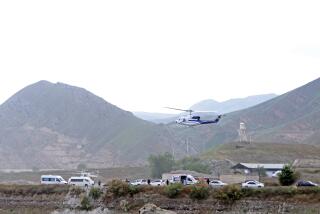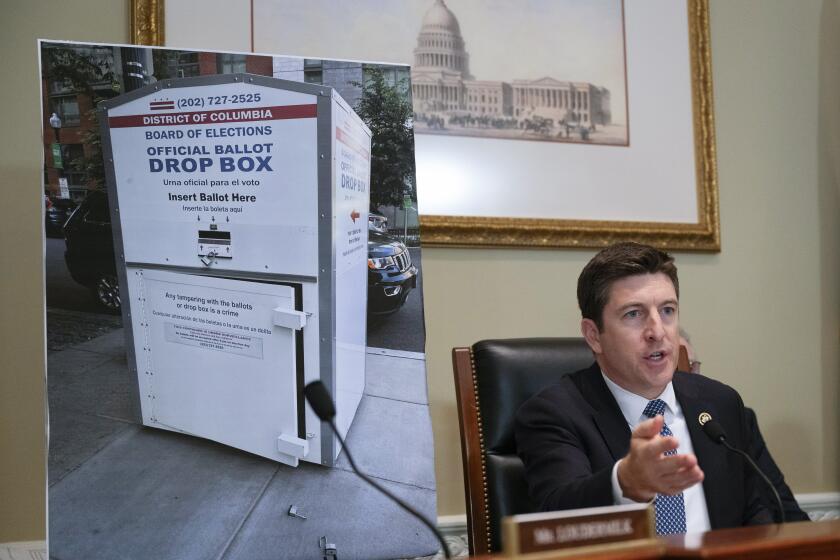Researchers Dive Into Study of Marine Sanctuary
The value of the waters off Ventura County is more than surface deep.
They are an aquarium, home to 25 shark species, elephant seals and the world’s largest concentration of the largest animals ever, blue whales. They are a factory, where cold currents from Alaska and warm water from Baja churn in a nutrient broth to pump energy through the food web. They support an industry of squid, urchin and rockfish.
And this week, these waters become a laboratory. A newly launched five-year expedition makes its first foray into the 1,658-square-mile Channel Islands National Marine Sanctuary to explore the deep ocean and the creatures that inhabit it.
Dubbed the Sustainable Seas Expeditions, it is part of a $5-million program led by the National Geographic Society and the National Oceanic and Atmospheric Administration.
For the next two weeks, researchers will probe the sanctuary using scuba equipment, map-making satellites, surface ships and a new one-person submarine, DeepWorker 2000, designed for this project.
They will count fish, assess the health of the underwater habitat, map the bottom and look for new species.
The purpose is to raise public awareness and support for the ocean in communities near the nation’s sea sanctuaries.
The expedition will visit all 12 National Marine Sanctuaries by the end of the year. It began in California in April with visits to sanctuaries at the Farallone Islands near San Francisco, the Cordell Banks off Point Reyes, and Monterey Bay.
“Less than 3% of the ocean has been explored. We know more about Mars than we do about the ocean,” said Francesca Cava of Santa Barbara, expedition project manager and former manager of the oceanic and atmospheric administration’s marine sanctuaries. “There’s many of us who live on the coast who look out on the ocean and think it looks well, but we take it for granted and don’t know what’s happening. But things are happening, and what we do on land affects the ocean.”
This project marks the first systematic exploration of deep waters at the marine sanctuaries, a realm seldom accessed by researchers, who often rely on sonar readings and the contents of nets hauled up from the depths to tell them about what’s happening below.
*
“It’s like exploring forests by helicopter and dropping things to snatch chipmunks or squirrels,” said Gary Davis, senior scientist for Channel Islands National Park. “Every time you go down there you find new things. That tells us we don’t know very much about the ocean.”
Using DeepWorker, scientists can dive to 2,000 feet, although they probably won’t go so deep at Channel Islands until operators gain more experience with the craft.
Nonetheless, the vessel can help answer important questions such as: Do rockfish congregate around oil rigs? Where do squid go? What animals live in a deep reef between Anacapa and Santa Cruz islands? How did El Nino affect the deep ocean? Does a Santa Barbara sewage outfall pipe affect the sanctuary? Where should fishing be prohibited?
“What has eluded us is access. We are so constrained getting into the ocean,” said Sylvia Earle, explorer in residence at the National Geographic Society and director of the expeditions.
“This new technology is helping. It’s a technological breakthrough. It’s like flinging open the doors to the scientific community.”
But some scientists familiar with the project are skeptical.
In private, they describe the Sustainable Seas Expeditions as “science light.” They say too much submarine time is being devoted to public relations and too little to getting scientists face-to-face with marine life.
Nonscientists taking rides in DeepWorker include a Monterey school teacher, a USA Today reporter and bureaucrats.
*
“As now configured, this program is more for publicizing the ocean than for concrete science. I don’t see this as a particularly useful scientific tool,” said one scientist.
Event organizers acknowledge that public relations is an important part of the program. If the oceans and the creatures they harbor are to thrive, it is important to get the public to pay more attention to the health of the offshore waters.
On Thursday, volunteer divers working with the expedition will participate in the Great American Fish Count.
Landlubbers can watch via the Internet and ask scientists questions.
To access, go to https://www.sustainableseas.noaa.gov and click on the link to NASA’s Web page for schedules.
On June 3, using the same Internet links, the public can join a live discussion with scientists in the Santa Barbara Channel aboard the oceanic and atmospheric administration’s ship McArthur.
An open house is scheduled for June 5 at the Santa Barbara Maritime Museum, featuring researchers, DeepWorker 2000 and a free tour of McArthur.
Just hours after research crews and their vessels arrive at Port Hueneme today, about 30 high school students from Ventura, Santa Barbara and San Luis Obispo counties are scheduled to meet in Santa Barbara to recommend topics to explore in the Channel Islands sanctuary.
*
Kayla Bridgeforth and Leah Kammeyer, both juniors at Rio Mesa High in Camarillo, got interested in the project through their oceanography class.
Kayla, a Tennessee transplant who has never been in the ocean, figured this might be the closest she gets to deep-sea exploration.
They will ask the scientists to look for soft corals for their research project.
“We need to learn more about the ocean to educate the community so we don’t do something stupid to it, like pollute it,” said Leah, who is thinking about a career in marine sciences.
*
Said Earle: “There is a strong conservation theme here. We want to change the way people think about the ocean. It’s not just the fish that lose when we pollute the ocean, and it’s not just the fish that lose when we take them out of the sea.
“We are compromising the resiliency of the natural systems that sustain us. The ocean gives us the air we breathe, it regulates temperature and climate and the nutrient cycle. It shapes the character of Earth and it makes conditions hospitable for life above the water.”
More to Read
Start your day right
Sign up for Essential California for news, features and recommendations from the L.A. Times and beyond in your inbox six days a week.
You may occasionally receive promotional content from the Los Angeles Times.






